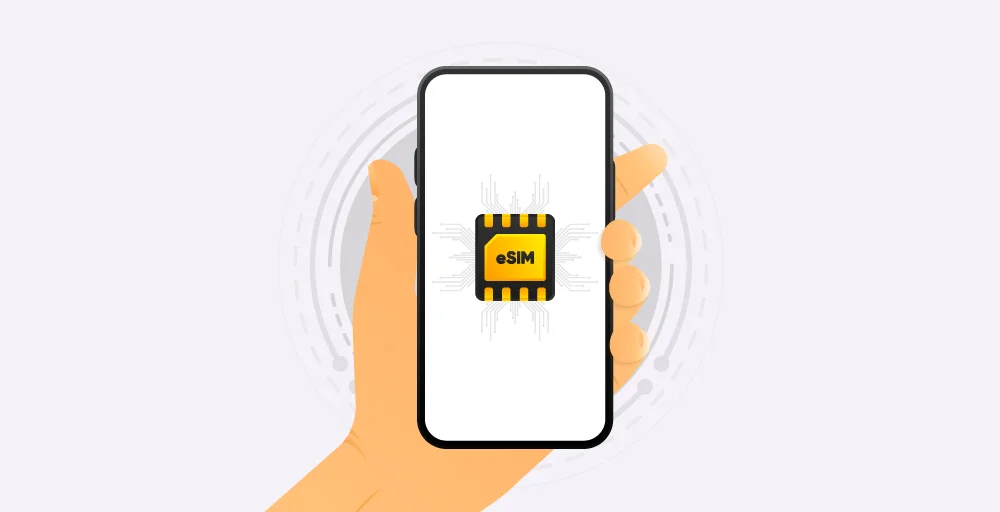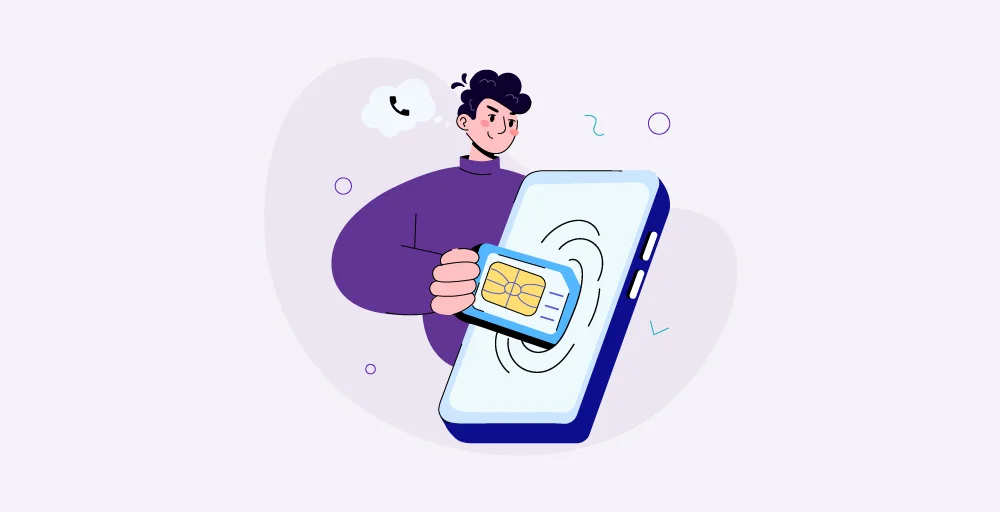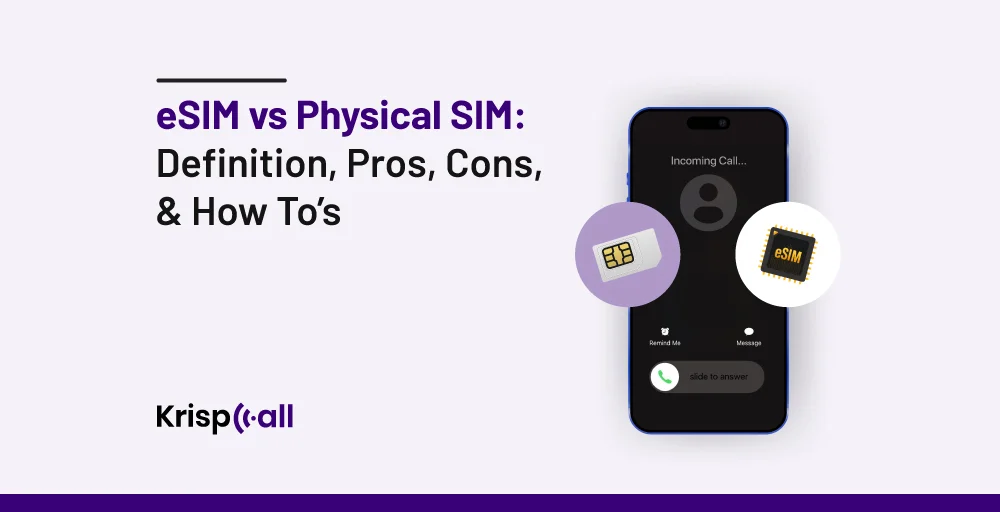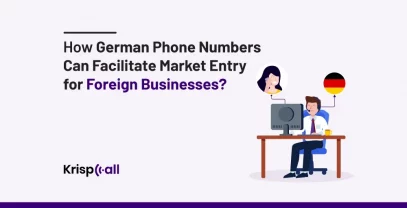The landscape of mobile technology is continuously changing, transforming how users connect to their cellular networks. While physical SIM cards were once the only option, the rise of eSIM technology is now 🤔 changing the game.
However, both have their own set of 😐 pros and cons. Physical SIM cards offer wider availability and easier transfer between phones. On the other hand, eSIMs provide enhanced security and save space.
Likewise, in this article, we will discuss the definition and more pros and cons of both eSIM vs physical SIM. In addition, we will walk you through the information on the list of phone support and how to activate your eSIM.
🔑 KEY HIGHLIGHTS
- eSIM is a digital chip embedded in the mobile phone, while a physical SIM card is a small removable plastic card.
- eSIM offers a safe and convenient choice for easy switching between carriers and plans.
- A physical SIM might be a better choice for wider compatibility, particularly for local prepaid plans, while an eSIM is best for enhanced security.
- iPhone XS, Galaxy S20, and Pixel 3 are some of the phones that support eSIM.
What is eSIM?

An eSim is a digital chip that allows you to activate a cellular plan from your service provider without a physical SIM card. These tiny chips are soldered inside the device, making it more convenient and safe. With an eSim, you can use multiple phone numbers on a single device.
eSIMs can be programmed remotely and allow you to activate a new plan with your chosen carrier without visiting a physical store. They also offer some advantages, like increased safety and the capacity to store multiple profiles on some devices.
In addition, eSIM essentially allows you to keep separate work and personal phone numbers on the same device. As technology advances, eSIMs are becoming increasingly popular and are predicted to be the future of mobile connectivity.
How does an eSIM work?
An eSIM is a digital SIM card soldered directly onto your device’s circuit board. Unlike traditional removable SIM cards, eSIMs depend on software for configuration. When you switch carriers or data plans, your service provider sends a profile to your device which activates the eSIM with their network information.
This profile download can be done via a carrier app or QR code scan. With the eSIM activated, your device can connect to the chosen network, allowing you to make and receive calls and access data.
Experience all the features of a traditional SIM card while benefiting from the added convenience of small switching and the option of having multiple profiles for different carriers on a single mobile phone.
What is a Physical SIM?

A physical SIM is a small and thin card that fits in your mobile phone. This tiny card acts like a key that unlocks your phone’s ability to connect to a specific cellular network carrier and use its services. Physical SIM also allows you to access data, make & receive calls, and send texts and SMS.
These physical SIMs can be easily inserted into or removed from your phone. They come in various sizes, such as micro, nano, and standard. The SIM card plays a role in phone security by requiring a PIN (Personal Identification Number) to unlock it. This helps prevent unauthorized access to your phone number and cellular services.
eSIM vs Physical SIM: What are the differences?
The major difference between a physical SIM card and an eSIM card is that a physical SIM is a tiny removable card that can store your network data. On the other hand, an eSIM is a built-in chip programmed remotely.
With an eSIM, you don’t need to worry about switching providers or plans, because you don’t need to get a new physical card. However, they are also not as prevalent and may require service provider support for activation.
| Feature | eSIM | Physical SIM |
| Form Factor | Embedded chip. | Removable card. |
| Flexibility | More flexible, can switch carriers remotely by downloading a new profile. | Less flexible and requires replacing the card to switch carriers. |
| Security | More secure, it can not be physically removed from the device. | It can be physically lost or stolen. |
| Availability(Current) | Not yet available on all phones. | Widely available on most phones. |
| Cost | Typically no additional cost for eSIM itself. | It may have a one-time activation fee (varies by carrier). |
Is eSIM better than physical SIM cards?
eSIM and physical SIM cards have their own advantages and limitations. Eventually, eSIMs will offer more benefits than physical SIMs. They’re smaller and more tamper-proof, eliminate the risk of losing a tiny card, and allow for storing multiple network profiles on a single device.
This means you can easily switch carriers without needing a new SIM card. However, eSIM technology is still evolving, and not all phones or carriers currently support it. Nonetheless, physical SIMs remain widely compatible and might be preferable if you frequently switch between older phones or need to use a temporary plan while traveling.
eSIM vs Physical SIM: Pros and Cons

Once, a physical SIM card was the only option for connecting with family, friends, or business partners. But as technology has evolved, most people now consider embedded SIM or eSIM over the physical SIM. Even though this new technology offers a range of advantages, it also comes with some limitations. One such issue is the potential risk of SIM swap fraud, where someone might try to take control of your phone number.
So here are the pros and cons of eSIM.
eSIM Pros
- Security: Physical SIM cards are at higher risk of being lost or damaged compared to eSIMs. Since eSIMs are embedded chips, you don’t have to worry about them. Even more, some eSIMs even have self-destructive features that can erase all your data after a failed attempt to unlock it by an unauthorized person.
- Space-savings: eSIM frees up space inside the phone for other components, which could result in sleeker and more compact designs.
- Dual SIM support: Some devices accept both an eSIM and a physical SIM for use in two different phone numbers or data plans at the same time.
eSIM Cons
- Not supported on all devices: eSIM technology is not currently supported by all devices or carriers.
- Difficulty in transferring between phones: By changing your eSIM to another phone, you might need to contact your carriers; on the other hand, a physical SIM can be popped out and inserted into another phone.
- Travel limitations: As eSIM technology continues to expand globally, some countries have imposed restrictions on using eSIM with local carriers, mainly for prepaid plans.
Here are the pros and cons of a physical SIM card:
Physical SIM Pros
- Wider availability: Physical SIMs provide much broader border compatibility with phones and carriers across the globe.
- Easier transfer between phones: You can easily remove Physical SIM from one phone and to another phone to transfer your service.
- Better for frequent travelers: Physical SIMs offer more flexibility and convenience if you depend on local prepaid plans when traveling internationally.
Physical SIM Cons
- Can be lost or damaged: Physical SIMs are tiny cards and can be easily lost or damaged.
- Less secure: Physical SIM can be used in another phone to make calls or access data if lost or stolen.
- Less convenient for switching plans: To switch carriers or plans requires contacting a new service provider and waiting for them to send you a new SIM card, or you can visit one of their stores.
Phones That Support eSIM
Many phones support eSIM these days. Here are some of the related models from popular brands:
- iPhone XS or newer
- Galaxy S20 or newer
- Pixel 3 or newer
- Apple Watch Series 3 and newer
- Galaxy Gear S2 and newer
Contemporary smartphones can support at least one eSIM, although the number of eSIMs a device can support differs. Newer models, such as the iPhone 15 series and Google Pixel 8, can achieve improved versatility, as they can support multiple eSIMs.
How can I activate my eSIM on my phone?
To activate your eSIM, you need to obtain a profile from your carrier. This can be done in a few ways: the service provider might send you a QR code to scan or download the profile via their app. Once you get your profile, you can follow your phone instructions to add it.
This usually involves going to your settings menu and choosing the cellular or mobile data section. You’ll then be prompted to scan the QR or choose the downloaded profile. After that, the service provider will remotely activate the eSIM and allow you to proceed without any issues.
🔥 Here are the detailed steps for activating eSIM on my phone:
- Contact your Carrier: You need to get an eSIM profile from your service provider. You can contact the carrier directly or visit their app or website.
- Obtain Activation Information: The carriers might provide you with a QR code to scan or an activation code to enter manually.
- Access Phone Settings: Find the mobile network configurations on your device. This is usually under “Cellular” or “Mobile Data” settings.
- Look for the eSIM Activation Option: The specific wording might differ depending on your phone, but you should see an option to “Add eSIM” or “Setup Cellular Plan.”
- Scan or Enter Activation Code: If you have an activation code follow your phone instructions. If you have a QR code, simply scan it using your camera app.
- Wait for Activation: It takes a few minutes to activate. Your phone will notify you once your eSIM is active.
eSIM vs Physical SIM Signal Strength: Which is more Powerful?
There’s no difference in signal strength between eSIM and physical SIM cards. The connectivity of both devices depends on the same cellular network infrastructure and your device’s antenna to connect.
Signal strength is influenced by factors such as distance from cell towers, obstructions, and interference, not the SIM you use. It doesn’t matter whether you have an eSIM or a physical SIM; you’ll experience the same signal strength in a given location.
Conclusion: Should I Switch To eSIM?
Both eSIMs and physical SIM cards have pros and cons. While eSIMs offer convenience and security physical SIM card is easily transferable. However, the major disadvantage of eSIM is it is supported on limited devices.
On the other hand, physical SIMs have risks of loss or damage. Therefore, choosing these two communication forms totally depends on your requirements and needs. Choose based on priorities: eSIM for remote switching and security, physical SIM for wider compatibility, especially for travelers.
FAQs
Is it possible to switch from SIM to an eSIM?
Yes, in most cases, you can switch your current phone number to an eSIM. This process is usually managed by your carrier.
Are eSIM secure and reliable?
Yes, eSIMs are generally considered secure and reliable. eSIM can’t be physically lost or stolen like a physical SIM. eSIM also offers remote wipe capabilities. The security depends on digital measures like PINs and strong encryption.
How much does it cost to purchase an eSIM?
The cost of using an eSIM itself is usually negligible. In most cases, there will be no additional charge for the eSIM compared to a physical SIM card.
The cost of an eSIM depends on your carrier’s plan. Similar to a one-time activation fee, you’ll pay for the mobile data or service plan you select. However, the average cost of an eSIM is between 20 and 50 cents.
Are virtual SIM cards and eSim the same?
No, Virtual SIM cards and eSIMs are distinct from each other, although they are sometimes referred to interchangeably. An eSIM is a small chip embedded directly in your phone.
On the other hand, a virtual SIM is a cloud-based service that provides you with a number that can be used on various devices.
Can I use both eSIM and physical SIM on my phone at the same time?
Yes, some smartphones simultaneously support a physical SIM and eSIM, known as dual SIM functionality. This allows customers to have two different phone numbers or data plans active on their phones, giving them increased flexibility in their mobile usage.





